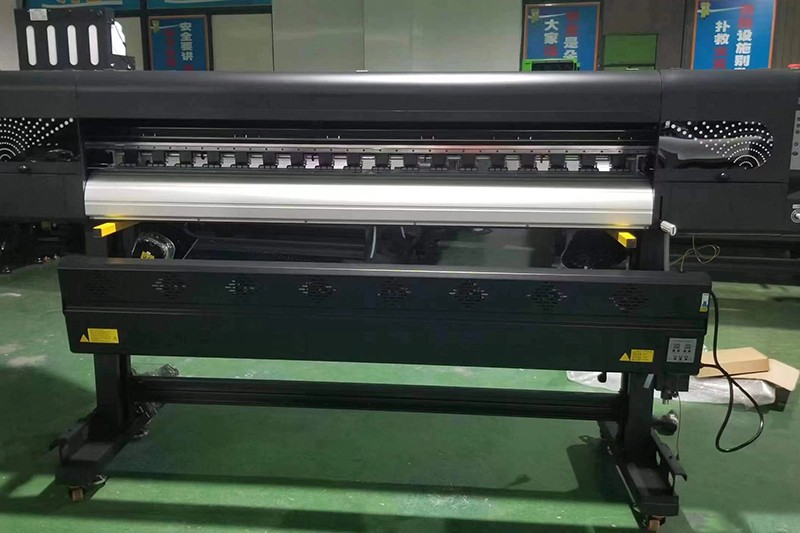The KTM-1802, a 2-head high-speed digital printing machine, utilizes the innovative Direct-to-Film (DTF) printing technology to revolutionize textile printing. This process offers a versatile and efficient alternative to traditional methods like screen printing and direct-to-garment (DTG) printing. Let's delve into the intricate workings of the KTM-1802 and explore the magic behind DTF printing.

Design and RIP Processing
The journey begins with your desired design. Using specialized RIP software like Maintop or PhotoPrint, the design is processed and prepared for printing. The software optimizes the image, ensuring color accuracy and print quality. It also generates the necessary print data, including color separations and print head instructions.
Printing on Film
The KTM-1802 boasts two high-precision 13200-A1 printheads, capable of printing vibrant and detailed images onto a special PET film. This film acts as the transfer medium, temporarily holding the design before it is applied to the fabric. The printer utilizes a CMYK color model along with white ink, allowing for printing on both light and dark fabrics.
White Ink Application
A crucial step in DTF printing is the application of a white ink layer. This layer serves as a base, ensuring the vibrancy and opacity of the colors on the final fabric, especially on darker materials. The KTM-1802's self-developed all-aluminum ink stack ensures reliable and consistent ink flow, crucial for achieving a uniform white base.
Powder Adhesive Application
Once the design and white ink are printed onto the film, a hot-melt powder adhesive is applied. This powder adheres to the wet ink, creating a thin and even layer. The excess powder is then removed, leaving only the adhesive on the printed areas.
Curing and Drying
The film with the printed design and adhesive is then passed through a curing unit. The KTM-1802 features an auto constant temperature drying system, ensuring the material is uniformly heated. This process melts the adhesive powder, bonding it securely to the ink.
Transfer to Fabric
The cured film is now ready for transfer onto the fabric. This can be achieved using a heat press machine. The heat and pressure activate the adhesive, permanently bonding the design to the fabric. The PET film is then peeled off, leaving behind the vibrant and durable print.
Versatility and Applications
The KTM-1802's DTF printing capabilities extend beyond just garments. It can be used to print on a wide range of materials, including cotton, polyester, blends, leather, and more. This opens doors to diverse applications, from personalized apparel and accessories to home décor and promotional items.
Advantages of DTF Printing
DTF printing offers several advantages over traditional methods:
Versatility Print on various fabrics and materials, including dark and light-colored textiles.
Durability Prints are resistant to washing, stretching, and fading.
High Quality Achieve vibrant colors, fine details, and sharp images.
Efficiency Streamlined process with minimal setup and pre-treatment requirements.
Cost-Effective Reduced production costs compared to some traditional methods.
The KTM-1802's Advanced Features
The KTM-1802 is equipped with features that enhance its efficiency and user-friendliness:
Large Capacity Ink Alarm System Ensures continuous ink supply and prevents interruptions.
Lack of Paper Alarm System Alerts the operator when the paper supply is low, ensuring smooth operation.
Personalized Customization Adaptable to specific needs of the braid and pyrography industries.
The KTM-1802 DTF printer represents a significant advancement in textile printing technology. Its efficient workflow, versatility, and high-quality output make it an ideal choice for businesses and individuals seeking to explore the creative possibilities of fabric printing. From personalized garments to unique promotional items, the KTM-1802 empowers users to bring their designs to life with vibrant and lasting results.
If you have product purchasing needs, you can contact us
